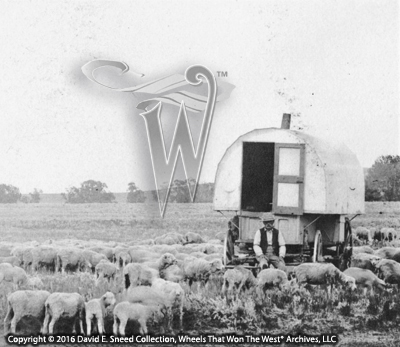Not long ago, I read a piece estimatingthat 80% of the world’s gold has yet to be uncovered. It’s one of those thought-provoking assertionsthat helps remind us of how much opportunity still exists in this world. In a similar way, I believe that the vastmajority of what there is to learn about America’s first transportationindustry has yet to be discovered. Wemay know a fair amount but most of us still don’t have all the pages of the early trade publications committed to memory. It’s a humbling reminder of the extreme depthof this subject and how far we have to go to preserve what’s left.
Truth is, in order to save and properlyshare our heritage, we must first be able to recognize it. The only way to recognize and fullyappreciate this part of yesterday is to develop a more solid understanding ofthe vehicles, brands, parts, processes, people, challenges, innovations, and industrypractices.
Unfortunately, I’m not aware of anyshortcuts to acquiring so much information. As a result, over the last 20-plus years, I’ve chased more than my fairshare of discarded history. Along theway, I’ve logged tens of thousands of hours in the hunt for old documents,forgotten artifacts, and other unknown details related to wheels from thehorse-drawn era. It’s an obsessionthat’s taken me all over the U.S. in a continual search for answers. And, yes, the efforts can seem a little crazyeven to me at times. Nonetheless, the processhas allowed us to recognize, recover, and gather thousands of period artifactsand images. Along the way, we’ve been ableto help preserve and showcase a world of information – including theestablishment of time frames pointing to evolutionary differences in wagons andearly western vehicles. In other words,every old wagon isn’t the same as another.
Some of these character traits can evenhighlight ways that competition drove innovation – just as it does today. For instance, did you know that almost everytype of early horse-drawn wagon had multiple patents attached to its design? There is one early style, though, that I’veyet to find a single patent directly associated with… the chuck wagon. Typically built on early farm, military, andmountain wagon running gears (any of which may have had its own patents), theserolling kitchens were truly custom creations for almost every outfit. Studebaker Manufacturing Company in SouthBend, Indiana did offer and produce a ‘Round-Up’ chuck wagon for use on ranchesin the early 1880’s. Even though it wasequipped with Studebaker’s own version of a chuck box and pantry, it was merelya ‘ready-made’ chuck wagon and wasn’t patented. (Although the steel skeins onthe running gear were). It’s a differentstory for a wealth of other wagon styles though. From farm, freight, and business wagons to militaryand even sheep wagons, each of these vehicle types had some connection to legallyprotected ideas.
To that point, I recently uncovered whatmay be the only patents ever granted for Sheep Camp wagons – also known assheep wagons and sheepherder wagons. Asfar as I know, today’s blog is the first public notice of these patents in wellover a century. Each is a discovery wewere fortunate to make and, likewise, each is another reminder of how we’reoften required to adjust what we thought we knew about America’s firsttransportation industry.
The oldest sheep wagon patent I cameacross was applied for in January of 1899. It primarily dealt with ways to keep the living quarters morecomfortable from outdoor conditions. More specifically, the patent describes construction features engineeredto keep the wagon interior “absolutely wind-proof and dust-proof.” Additionally, the design was complementedwith a large hook mounted on the side of the wagon for holding harness. When not in use, the hook was fashioned tofold flush and out of the way.
Filed in 1908, the second patent also camewell after the commonly acknowledged creation of the sheep wagon in the 1880’s. Yet,almost every feature listed in this patent seems to be a replication of elementsthat were likely already included on many sheep wagons. It’s hard to see a substantial differencethat would have allowed for a legitimate patent. Even so, the legal proclamation was grantedin 1909.
Like so many other sheepherder wagons,the 1909 patent calls for a bed to lie transverse to the length of the wagonbox. A pull-out table was located underthe bed, side bunks doubled as seating and storage, an indoor stove waspositioned near the door, the door, itself, was divided in half, and the rearwindow included a hinged and sliding sash. Additionally, there were a host of other commonly-seen accoutrementslisted in the patent.
It’s possible that, with large nationalmanufacturers like Studebaker, Stoughton, Mitchell, Milburn, Winona, Kentucky,and Racine-Sattley all taking an interest in Sheep Camp beds, the attention mayhave caused some to want to secure ownership rights on the most popular designs. At this point, it’s hard to say. We just don’t have enough details to know onwhat grounds this particular patent was submitted and granted. As is the case in so many discoveries, thefinding of one piece of a puzzle may help answer some questions. At the same time, it can open the door to awhole new can of worms.
Today, Sheepherder wagons are stillextremely popular. From collectors andresort operators to private guest quarters, working ranches, and competitions, thecustom creations have a way of providing a world of unforgettable memories in atruly ‘moving’ design.
Please Note: As with each of our blog writings, all imagery and text is copyrighted with All Rights Reserved. The material may not be broadcast, published, rewritten, or redistributed without prior written permission from David E. Sneed, Wheels That Won The West® Archives, LLC

